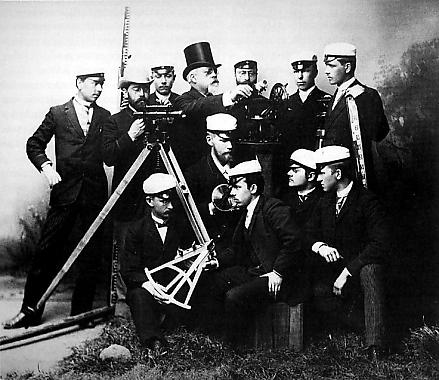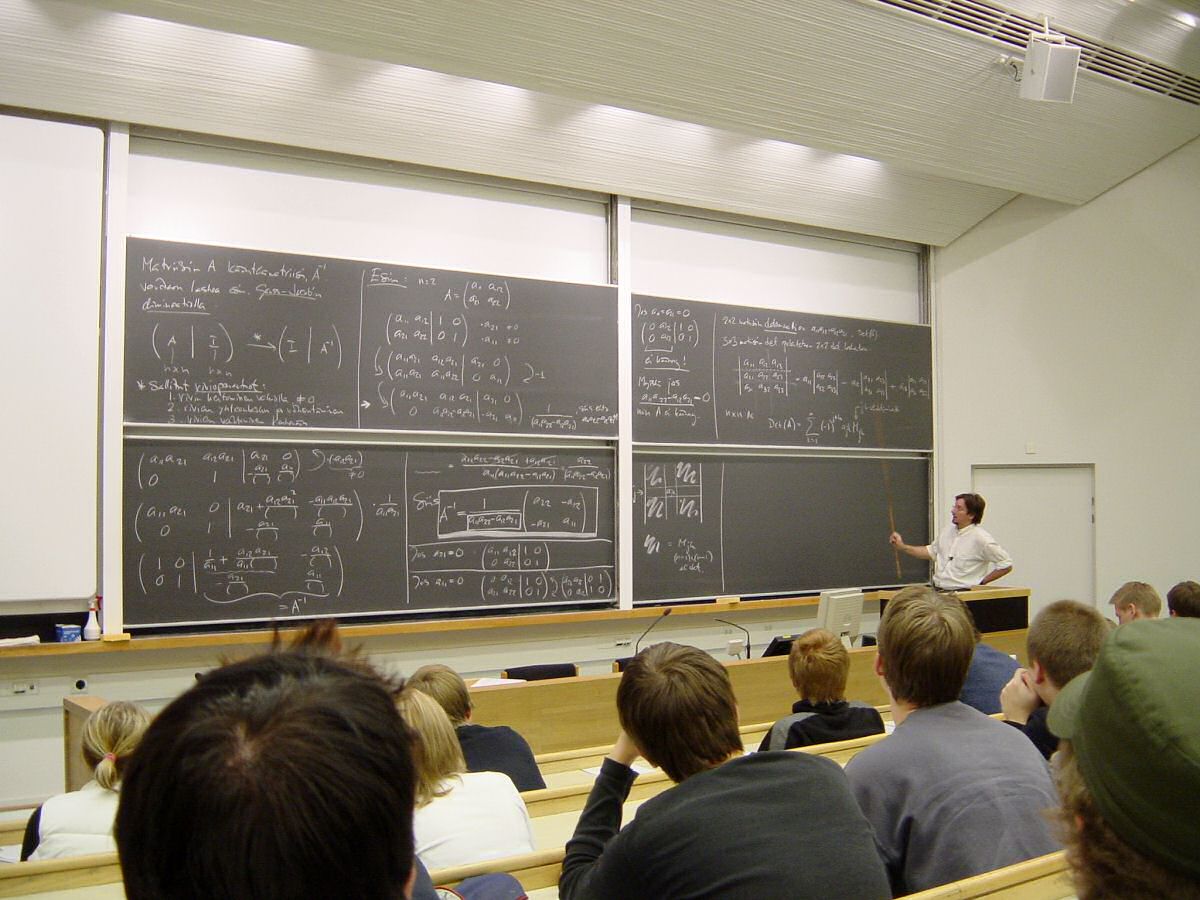|
Teknologföreningen
Teknologföreningen (commonly abbreviated TF) is the Swedish-speaking student nation at Aalto University, serving as a community for the university's Swedish-speaking students. Teknologföreningen was founded in 1872 by and for students of the Helsinki University of Technology. Language strifes within the early association led Finnish-speaking students to separate and form their own association, which eventually became the university's student union, leaving TF primarily for Swedish speakers. Today Teknologföreningen is the only student nation at Aalto University and the only statutory student nation in Finland outside the University of Helsinki. Urdsgjallar Teknologföreningen operates on the Aalto University campus in its own building named Urdsgjallar, which was designed by architect Kurt Moberg (1932–2016) and completed in 1966. It is one of the most renowned examples of Finnish concrete brutalism. The building has fallen into poor condition and is planned to be complete ... [...More Info...] [...Related Items...] OR: [Wikipedia] [Google] [Baidu] |
Helsinki University Of Technology
Helsinki University of Technology (TKK; ; , HUT in international usage) was a technical university in Finland. It was located in Otaniemi, Espoo in the Helsinki metropolitan area, and it was one of the three universities from which the modern day Aalto University was founded. The university was founded in 1849 by Grand Duke of Finland, Emperor Nicholas I and received university status in 1908. It moved from Helsinki to Otaniemi campus area in 1966. The merger of HUT with two other schools created the Aalto University in 2010, and HUT briefly held the name Aalto University School of Science and Technology before being split into four schools in 2011. Much of the university's Otaniemi campus was designed by Alvar Aalto. History In 1849, TKK was established in Helsinki by the decree of the Russian Emperor Nicholas I, Grand Duke of Finland as a "manufacture and handicraft school", with the name ''Helsingin teknillinen reaalikoulu/Helsingfors tekniska realskola'', along w ... [...More Info...] [...Related Items...] OR: [Wikipedia] [Google] [Baidu] |
Nations At Finnish Universities
In Finland, student nations (in Finnish, sg. osakunta, pl. osakunnat; in Swedish (student)nation) are student organisations within which a large proportion of extra-curricular student activity takes place. Though membership is not compulsory, the nations provide one of the main nodes of student social life, along with the faculty-based student organisations (tiedekuntajärjestöt) and subject-based student organisations (''ainejärjestöt'') at the universities. The first Finnish student nations were originally established at The Royal Academy of Turku. When the Academy moved to Helsinki after the Great Fire of Turku taking the name Imperial Alexander University in Finland, the nations moved along with it. Their institutional form is based on the original nation system of Uppsala University. After Finland had gained its independence from Russia, the university was renamed as the University of Helsinki. Today there are 15 nations, each one representing a historic region or provi ... [...More Info...] [...Related Items...] OR: [Wikipedia] [Google] [Baidu] |
Aalto University
Aalto University (; ) is a public university, public research university located in Espoo, Finland. It was established in 2010 as a merger of three major Finnish universities: the Helsinki University of Technology, the Helsinki School of Economics and the University of Art and Design Helsinki. The close collaboration between the scientific, business and arts communities is intended to foster multi-disciplinary education and research. The Finnish government, in 2010, set out to create a university that fosters innovation, merging the three institutions into one. The university is composed of six schools with close to 17,000 students and 4,000 staff members, making it Finland's second largest university. The main campus of Aalto University is located in , . Aalto University Executive Education operates in the district of , . In addition to the Greater Helsinki area, the university also operates its Bachelor's Programme in International Business in and the Metsähovi Radio Observato ... [...More Info...] [...Related Items...] OR: [Wikipedia] [Google] [Baidu] |
Aalto University Student Union
Aalto University (; ) is a public research university located in Espoo, Finland. It was established in 2010 as a merger of three major Finnish universities: the Helsinki University of Technology, the Helsinki School of Economics and the University of Art and Design Helsinki. The close collaboration between the scientific, business and arts communities is intended to foster multi-disciplinary education and research. The Finnish government, in 2010, set out to create a university that fosters innovation, merging the three institutions into one. The university is composed of six schools with close to 17,000 students and 4,000 staff members, making it Finland's second largest university. The main campus of Aalto University is located in , . Aalto University Executive Education operates in the district of , . In addition to the Greater Helsinki area, the university also operates its Bachelor's Programme in International Business in and the Metsähovi Radio Observatory in . The univer ... [...More Info...] [...Related Items...] OR: [Wikipedia] [Google] [Baidu] |
Finland's Language Strife
Finland's language strife (; ) was a major conflict in mid-19th century Finland. Both the Swedish and Finnish languages were commonly used in Finland at the time, associated with descendants of Swedish colonisation and leading to class tensions among the speakers of the different languages. It became acute in the mid-19th century. Background Finland had once been under Swedish rule. Swedish (with some Latin) was the language of administration and education in the Swedish Realm. Swedish was therefore the most-used language of administration and higher education among the Finns. To gain higher education, one had to learn Swedish, and Finnish was considered by the upper classes to be a "language of peasants". Immigration of Swedish peasants to Finland's coastal regions also boosted the status of Swedish by sheer number of speakers. Although Mikael Agricola had started written Finnish with '' Abckiria'' in the 1500s, and a Finnish translation of the Civil Code of 1734 was p ... [...More Info...] [...Related Items...] OR: [Wikipedia] [Google] [Baidu] |
University Of Helsinki
The University of Helsinki (, ; UH) is a public university in Helsinki, Finland. The university was founded in Turku in 1640 as the Royal Academy of Åbo under the Swedish Empire, and moved to Helsinki in 1828 under the sponsorship of Alexander I of Russia, Tsar Alexander I. The University of Helsinki is the oldest and largest university in Finland with a range of disciplines available. In 2022, around 31,000 students were enrolled in the degree programs of the university spread across 11 faculties and 11 research institutes. As of 1 August 2005, the university complies with the harmonized structure of the Europe-wide Bologna Process and offers bachelor, master, licenciate, and Doctorate, doctoral degrees. Admission to degree programmes is usually determined by entrance examinations, in the case of bachelor's degrees, and by prior degree results, in the case of master and postgraduate degrees. The university is bilingual, with teaching by law provided both in Finnish and Swedi ... [...More Info...] [...Related Items...] OR: [Wikipedia] [Google] [Baidu] |
Finnish Heritage Agency
The Finnish Heritage Agency (, ), previously known in English as the National Board of Antiquities, preserves Finland's material cultural heritage: collects, studies and distributes knowledge of it. The agency is a cultural and research institution, but it is also a government authority charged with the protection of archaeological sites, built heritage, cultural-historically valuable environments and cultural property, in collaboration with other officials and museums. The Agency offers a wide range and diversified range of services, a professional staff of specialists, the exhibitions and collections of its several museums, extensive archives, and a specialized scientific library, all of which are at the disposal of the general public. The Finnish Heritage Agency is attached to the Ministry of Education An education ministry is a national or subnational government agency politically responsible for education. Various other names are commonly used to identify such agencies, suc ... [...More Info...] [...Related Items...] OR: [Wikipedia] [Google] [Baidu] |
Hufvudstadsbladet
''Hufvudstadsbladet'' (abbr. ''HBL'') is the highest-circulation Swedish language, Swedish-language newspaper in Finland. Its headquarters is located in Helsinki, the capital of Finland. The name of the newspaper translates approximately into "Journal of the Capital", ''hufvudstad'' (modern spelling ''huvudstad'') being the 19th-century Swedish spelling for ''capital''. The newspaper is informally also called ''Husis'' or ''Höblan''. History and profile ''Hufvudstadsbladet'' was founded by in 1864, and the first edition was published on 5 December the same year. The founder was August Schauman. During the late 19th century, the paper was the highest-circulation newspaper in Finland. In 1920 the company ''Hufvudstadsbladets Förlag och Tryckeri AB'' was founded to operate the newspaper. The company's principal owner and chief executive officer was Amos Anderson, who would also serve as editor-in-chief of the newspaper between 1922 and 1936. Konstsamfundet (approx. ''The Art Found ... [...More Info...] [...Related Items...] OR: [Wikipedia] [Google] [Baidu] |



